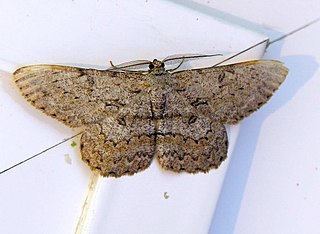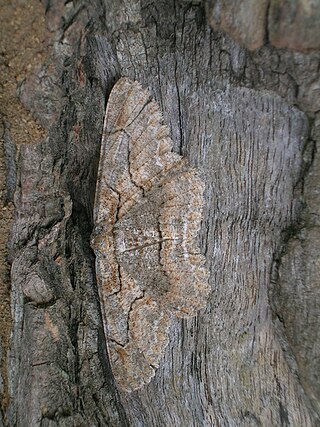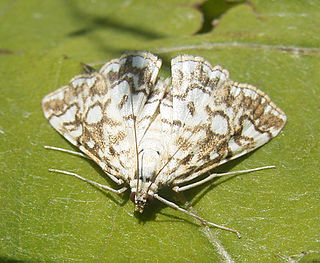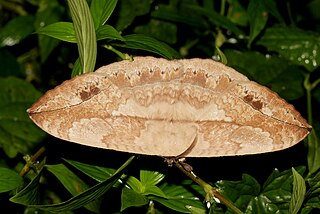Colonel Charles Swinhoe was an English naturalist and lepidopterist, who served in the British Army in India. He was one of the eight founders of the Bombay Natural History Society and a brother of the famous naturalist Robert Swinhoe.

Spilomelinae is a very species-rich subfamily of the lepidopteran family Crambidae, the crambid snout moths. With 4,135 described species in 344 genera worldwide, it is the most speciose group among pyraloids.

Hypomecis punctinalis, the pale oak beauty, is a moth of the family Geometridae. The species was first described by Giovanni Antonio Scopoli in his 1763 Entomologia Carniolica. The species can be found in central and southern Europe, Asia Minor, Transcaucasia, Russia, the Russian Far East, Japan, Korea, Ussuri and western China.
Monosyntaxis is a genus of moths in the family Erebidae. The genus was erected by Swinhoe in 1901.

Herpetogramma is a genus of moths in the family Crambidae described by Julius Lederer in 1863. It currently comprises 106 species that are found in North America, Eurasia, Australia, New Zealand, Central and South America. Of the few species where host plants are known, the larvae mostly feed on grasses.
Sundwarda is a monotypic moth genus of the family Erebidae erected by Charles Swinhoe in 1901. Its only species, Sundwarda dohertyi, was first described by Herbert Druce in 1901. It is found in Malaysia.

Cyclophora is a genus of moths in the family Geometridae. Many species are referred to as mochas in reference to their colouration, primarily in Europe.

Hypomecis is a genus of moths in the family Geometridae first described by Jacob Hübner in 1821.

Scopula is a genus of moths in the family Geometridae described by Franz von Paula Schrank in 1802.
Rivula everta is a moth of the family Erebidae first described by Charles Swinhoe in 1901. It is found in Australia in Queensland and the Northern Territory.

Acentropinae is a fairly small subfamily of the lepidopteran family Crambidae, the crambid snout moths. Species of this subfamily are exclusively found in wetlands and aquatic habitats.

Eupterote is a genus of moths in the family Eupterotidae. It was first described by Jacob Hübner in 1820.
Hypomecis luridula is a species of geometrid moth in the family Geometridae. It is found in North America.
Hypomecis buchholzaria, known generally as the blue spiderwort moth or Buchholz's gray, is a species of geometrid moth in the family Geometridae. It is found in North America.
Hypomecis gnopharia is a species of geometrid moth in the family Geometridae. It is found in North America.

Margaroniini is a tribe of the species-rich subfamily Spilomelinae in the pyraloid moth family Crambidae. The tribe was erected by Charles Swinhoe and Everard Charles Cotes in 1889, originally as family Margaronidae.

Hypomecis cineracea is a species from the genus Hypomecis.










